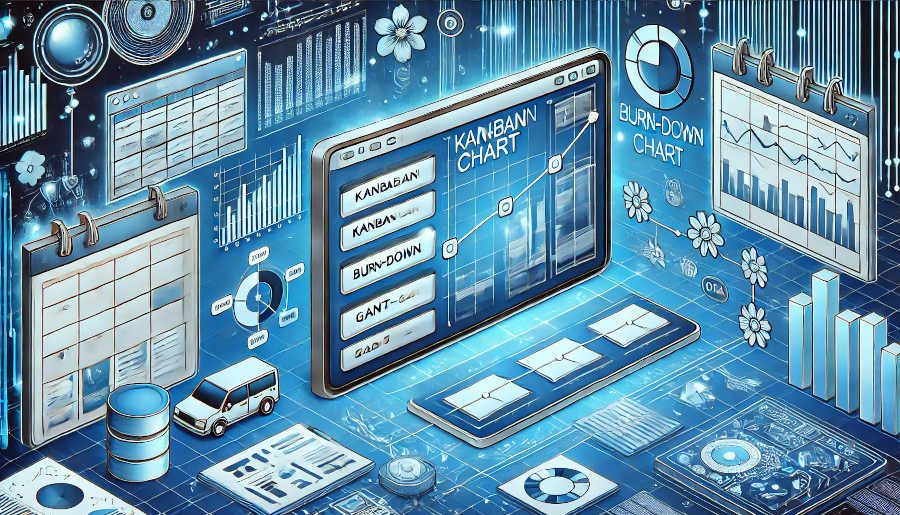Concept Definition
The first stage of the IPD process is Concept Definition. This stage is crucial as it lays the foundation for the entire product development journey. During this stage, the product idea is conceived, and the initial specifications are defined. This involves extensive market research to understand customer needs, competitive analysis to identify gaps in the market, and technical feasibility studies to ensure that the product concept is viable. The goal is to create a clear and actionable product vision that aligns with the company's strategic objectives.
Collaboration is key during the Concept Definition stage. Cross-functional teams, including marketing, engineering, and design, work together to refine the product concept. This collaborative approach ensures that all perspectives are considered, leading to a more robust and well-rounded product idea. Additionally, this stage involves setting clear objectives and success criteria, which will guide the subsequent stages of the IPD process. The importance of this stage cannot be overstated, as a poorly defined concept can lead to significant challenges and costly revisions later in the process.
Finally, the Concept Definition stage also includes risk assessment and mitigation planning. Identifying potential risks early on allows the team to develop strategies to address them, thereby reducing the likelihood of delays or failures in later stages. This proactive approach not only enhances the overall efficiency of the IPD process but also contributes to the successful delivery of a product that meets customer expectations.
Planning and Design
Once the concept is defined, the next stage is Planning and Design. This stage is where the detailed planning of the product development process takes place, and the initial design concepts are developed. The planning phase involves creating a comprehensive project plan that outlines the tasks, timelines, resources, and budgets required to bring the product to market. This plan serves as a roadmap for the development team, ensuring that everyone is aligned and working towards the same goals.
The design phase is where the product's architecture and detailed specifications are established. This involves creating prototypes, conducting design reviews, and iterating on the design based on feedback from stakeholders. The goal is to create a design that not only meets the functional requirements but also aligns with the company's brand and customer expectations. Advanced tools and technologies, such as computer-aided design (CAD) and simulation software, are often used during this stage to optimize the design and reduce the risk of errors.
Collaboration and communication remain critical during the Planning and Design stage. Regular meetings and reviews ensure that all team members are on the same page and that any issues or concerns are addressed promptly. Additionally, this stage involves close coordination with external partners, such as suppliers and contractors, to ensure that all components and materials meet the required standards and specifications. The success of this stage directly impacts the quality and functionality of the final product.
Development and Testing
The Development and Testing stage is where the actual product development takes place. This stage involves the fabrication of the product, the integration of various components, and the testing of the product to ensure that it meets the specified requirements. The development phase is typically the most resource-intensive stage, requiring significant investment in terms of time, money, and personnel. Engineers, technicians, and other specialists work together to bring the product design to life.
Testing is a critical component of the Development and Testing stage. Various types of testing are conducted, including functional testing, performance testing, and user testing, to identify any defects or issues. The goal is to ensure that the product performs as expected and meets the safety and quality standards. Testing also provides valuable feedback that can be used to make improvements and refinements to the product. This iterative process helps to optimize the product and ensure that it is ready for market.
Collaboration and communication are again essential during the Development and Testing stage. Regular updates and progress reports help to keep all stakeholders informed and ensure that any issues are addressed promptly. Additionally, this stage involves close coordination with regulatory bodies and certification agencies to ensure that the product complies with all relevant standards and regulations. The success of this stage is crucial for the overall success of the product, as any issues identified during this stage can have significant implications for the product's launch and market acceptance.
Production and Launch
The Production and Launch stage is where the product is transitioned from development to full-scale production. This stage involves the finalization of the manufacturing process, the setup of production lines, and the preparation for the product launch. The goal is to ensure that the product can be produced efficiently and cost-effectively while maintaining the required quality standards. This stage also involves the procurement of materials, the hiring and training of production staff, and the implementation of quality control measures.

The launch phase is where the product is introduced to the market. This involves extensive marketing and promotional activities to create awareness and generate interest in the product. The launch plan includes strategies for product positioning, pricing, distribution, and customer engagement. The goal is to create a successful launch that generates positive buzz and drives initial sales. The success of the launch is critical for the product's long-term success, as it sets the stage for future sales and market penetration.
Collaboration and communication are again key during the Production and Launch stage. Regular meetings and updates ensure that all team members are aligned and that any issues are addressed promptly. Additionally, this stage involves close coordination with external partners, such as distributors and retailers, to ensure that the product is available in the market and that the supply chain is functioning smoothly. The success of this stage directly impacts the product's market performance and the company's overall success.
Post-Launch and Continuous Improvement
The final stage of the IPD process is Post-Launch and Continuous Improvement. This stage focuses on monitoring the product's performance in the market and making any necessary adjustments to ensure its continued success. Post-launch activities include gathering customer feedback, analyzing sales data, and conducting market research to identify trends and opportunities. The goal is to understand how the product is being received by customers and to identify any areas for improvement.
Continuous improvement is an ongoing process that involves making incremental changes to the product based on feedback and market insights. This may include updating the product design, adding new features, or improving the manufacturing process. The goal is to enhance the product's value proposition and maintain its competitiveness in the market. Continuous improvement also involves staying abreast of technological advancements and industry trends to ensure that the product remains relevant and innovative.
Collaboration and communication remain critical during the Post-Launch and Continuous Improvement stage. Regular feedback loops and cross-functional meetings ensure that all team members are informed and that any issues are addressed promptly. Additionally, this stage involves close coordination with external partners, such as suppliers and distributors, to ensure that the product is continuously optimized and that the supply chain is functioning smoothly. The success of this stage is crucial for the product's long-term success and the company's overall growth.
Conclusion
The IPD process is a comprehensive and iterative approach to product development that emphasizes collaboration, efficiency, and customer focus. Each of the five key stages—Concept Definition, Planning and Design, Development and Testing, Production and Launch, and Post-Launch and Continuous Improvement—plays a critical role in the overall success of the product. By understanding and effectively executing these stages, organizations can optimize their product development process, reduce risks, and deliver products that meet customer needs and market demands. The importance of collaboration and communication cannot be overstated, as they are essential for ensuring that all stakeholders are aligned and working towards the same goals. Ultimately, the success of the IPD process depends on the commitment and expertise of the development team and the organization's ability to adapt and innovate in a rapidly changing market environment.
FAQ
1.What is the difference between IPD and traditional product development?
Traditional product development often follows a linear, sequential approach, with each stage being completed before moving on to the next. IPD, on the other hand, is an integrated approach that emphasizes collaboration and cross-functional teamwork from the outset. It involves continuous feedback and iteration, which allows for greater flexibility and responsiveness to changes in market conditions or customer needs.
2.How does IPD benefit small and medium-sized enterprises (SMEs)?
IPD can be particularly beneficial for SMEs, as it allows them to leverage the expertise of cross-functional teams and external partners to develop high-quality products efficiently. By adopting an integrated approach, SMEs can reduce development time and costs, improve product quality, and increase their competitiveness in the market.
3.Can IPD be applied to non-technical products?
Yes, IPD can be applied to a wide range of products, including non-technical ones. The principles of collaboration, customer focus, and continuous improvement are relevant across all industries. Whether the product is a physical good, a service, or a digital product, IPD can help organizations optimize their development process and deliver value to their customers.
ARTICLE TITLE :5 key stages of IPD process and their importance ,AUTHOR :ITpmlib

















